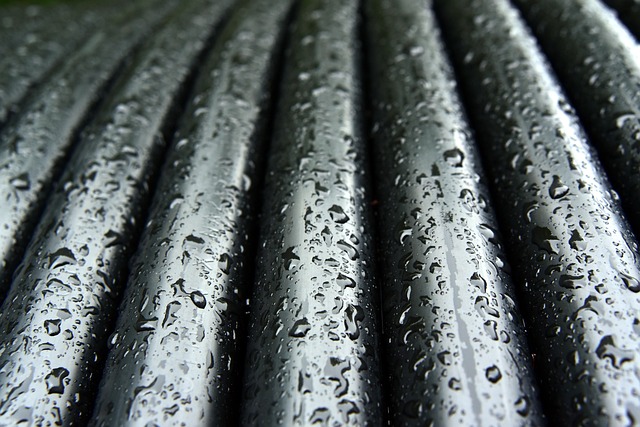Subsurface utility potholing is a vital safety process that identifies and maps buried utilities beneath construction sites, preventing damage and disruptions. Using advanced technologies like ground-penetrating radar (GPR) and electromagnetic location (EML), this method offers detailed insights into underground infrastructure, enhancing project safety and planning. Implementing best practices, including comprehensive assessments, strict protocols, and meticulous documentation, is crucial for adhering to standards, resolving disputes, and ensuring accurate record-keeping.
In today’s complex construction landscape, ensuring project safety is paramount. One often overlooked yet critical component is subsurface utility potholing, a meticulous process that uncovers vital underground infrastructure. This article delves into the intricacies of subsurface utility potholing and its role in enhancing project safety. We explore the detailed verification process, its numerous benefits, and best practices to ensure thorough inspections. By implementing these measures, construction teams can mitigate risks, avoid costly damages, and promote overall site safety.
Understanding Subsurface Utility Potholing: A Crucial Step in Project Safety
Subsurface Utility Potholing is a critical process that involves carefully exposing and verifying buried utilities beneath a construction site. It’s a crucial step in project safety, as it helps identify and map out essential services like water mains, gas lines, electrical cables, and communications infrastructure before any excavation begins. This method prevents accidental damage to these vital utilities, which can cause significant disruptions, financial losses, and even pose safety risks.
By employing subsurface utility potholing techniques, construction teams gain a detailed understanding of the underground landscape. They can accurately plan excavation activities, ensuring that heavy machinery and digging operations are conducted safely and in alignment with the location of critical utilities. This proactive approach not only minimizes the potential for damage but also streamlines project timelines by avoiding costly delays caused by unforeseen utility strikes.
The Process of Detailed Utility Verification: Methods and Techniques
Detailed Utility Verification (DUV) is a meticulous process aimed at identifying and mapping critical utilities beneath a construction site, ensuring safe excavation and minimizing damage risks. This involves several advanced methods and techniques to uncover and verify the location, type, and condition of underground services. One key method is subsurface utility potholing, where skilled professionals use specialized equipment to create small test pits or “potholes” in the ground, allowing visual inspection and accurate data collection. These potholes are strategically placed based on existing maps and initial surveys, providing a direct line of sight to expose buried utilities like water pipes, gas lines, power cables, and communication networks.
Additionally, advanced technologies such as ground-penetrating radar (GPR), electromagnetic location (EML), and sonar scanning play pivotal roles in DUV. GPR, for instance, uses radar waves to penetrate the soil, creating detailed images of subsurface structures. EML employs electromagnetic fields to detect metal components in utilities, while sonar scanning utilizes sound waves to map out underground features. These techniques complement potholing by offering non-invasive, real-time data acquisition capabilities, ensuring a comprehensive and efficient DUV process that enhances project safety across diverse construction scenarios.
Benefits of Implementing Thorough Utility Inspections
Implementing thorough utility inspections, such as subsurface utility potholing, offers numerous benefits that significantly enhance project safety and overall success. By identifying and mapping underground utilities accurately, construction teams can avoid costly mistakes like damaging crucial infrastructure during excavation. This minimizes risks of service disruptions, reduces potential hazards for workers, and prevents environmental contamination.
Moreover, detailed utility verification ensures projects adhere to regulatory standards and industry best practices. It allows for informed decision-making, efficient planning, and precise management of project timelines. Ultimately, thorough inspections contribute to smoother operations, improved safety records, and higher client satisfaction, making it an indispensable step in modern construction projects.
Best Practices for Effective Utility Potholing and Verification
Implementing best practices for subsurface utility potholing and verification is paramount to ensure project safety and mitigate risks. Before any excavation, a thorough assessment of the area is crucial. This involves identifying and marking all existing utilities using advanced technology like ground-penetrating radar (GPR) or electromagnetic location devices. These tools provide accurate data on utility positions, depths, and types, enabling precise potholing.
During the potholing process, teams should adhere to strict protocols. This includes using specialized equipment designed for safe and efficient utility exposure. All personnel must be trained in handling hazardous materials and following emergency procedures. Regular inspections at each stage of excavation ensure adherence to safety standards and allow for immediate correction of any deviations or issues. Documenting every step, from planning to completion, is essential for record-keeping, future reference, and potential dispute resolution.
In conclusion, incorporating detailed subsurface utility potholing into project safety protocols is a game-changer. By understanding this process, utilizing effective methods for detailed utility verification, and adhering to best practices, construction projects can significantly mitigate risks associated with buried utilities. These steps not only enhance safety but also streamline project management, ensuring successful outcomes without compromising integrity of critical infrastructure.
